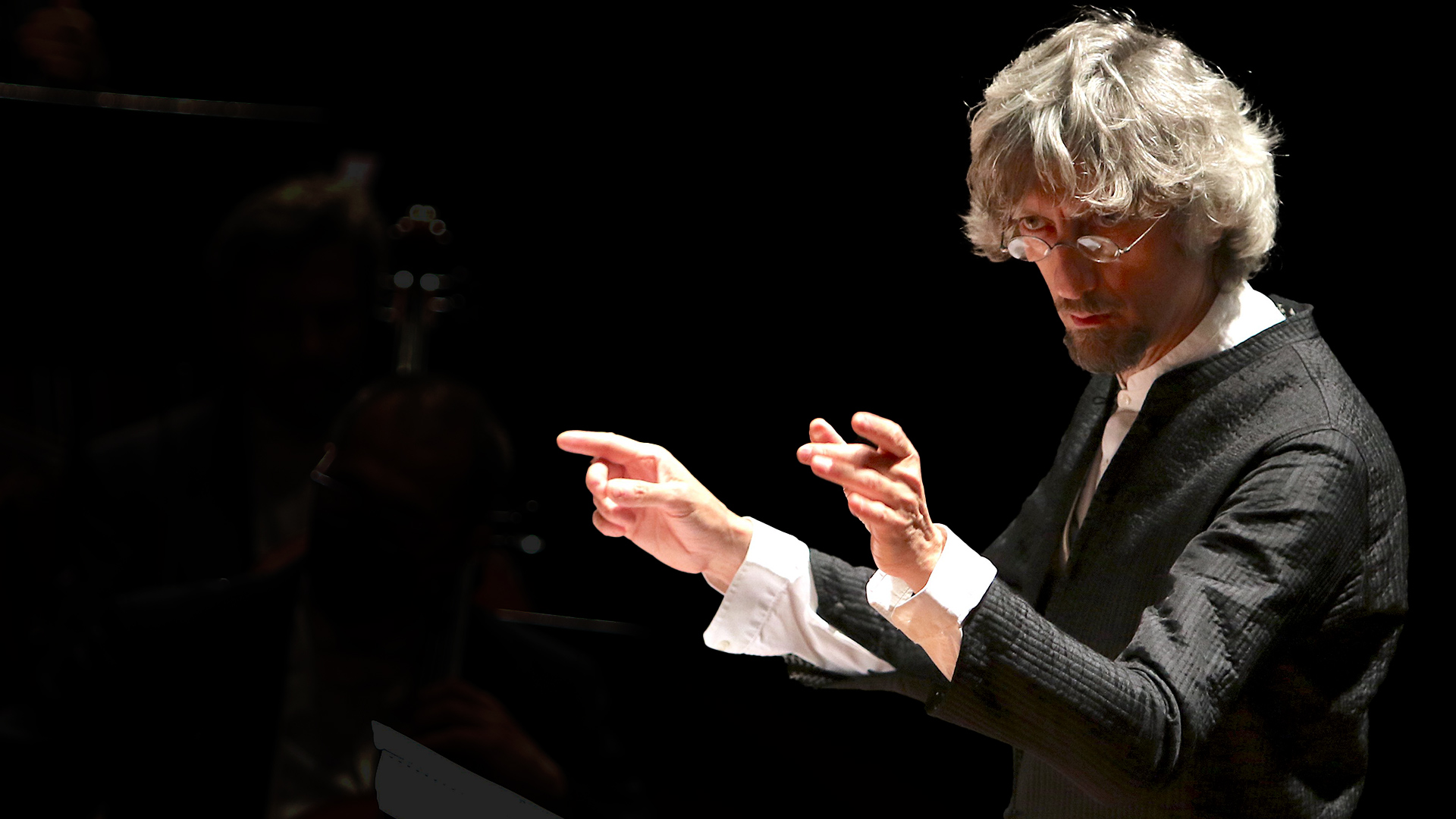FEDERICO MARIA SARDELLI
Concerto in C major for strings and basso continuo
Domine ad adjuvandum me musical psalm in G minor for soprano, strings and basso continuo
ANTONIO VIVALDI
Concert in G minor RV 157 for strings and basso continuo
In furore giustissimae irae RV 626 mottetto for soprano, strings and basso continuo
WOLFGANG AMADEUS MOZART
Symphony n. 20 in D major K. 133
Soprano
Roberta Mameli
Conductor
Federico Maria Sardelli
Opera Carlo Felice Genova Orchestra
This appointment with the symphonic cycle Mozart l’italiano focuses on the relationship between Wolfgang Amadeus Mozart and the Italian Baroque School, both through Antonio Vivaldi’s Concerto RV 157 and Motet RV 626 and two compositions by Federico Maria Sardelli.
Federico Maria Sardelli’s compositional activity is oriented towards the style of the Baroque era. According to the composer’s perspective, these are not exercises in formal writing, but rather a reproduction of ‘the daring originality and vibrant passion of the era, brought to life through the spirit of discovery’. The Concerto in C major for strings and basso continuo and the Psalm in G minor for soprano, strings and basso continuo Domine ad ad adjuvandum me can clearly be read in this light. The Concerto in C major was composed in 2014, and takes up the three-movement form of Vivaldi’s concerto. In the first movement – Allegro – the rhythmic element and the interplay of alternating lines of the strings are the main feature, the Andante, with its more reflective character, is followed by the brilliant Allegro assai finale. The Concerto is part of the Sacred Music collection published by Brilliant Classics. Instead, the Psalm Domine ad ad adjuvandum me was composed the previous year, in 2013, and consists of the parts Domine ad ad adjuvandum, Gloria Patri, Sicut erat and Amen. Refined rhythmic and harmonic writing returns, where ample space is also given to the virtuosity of the vocal line. The Psalm is part of the collection Baroque Concertos, Paslm, Chamber Music, published by Brilliant Classics.
The Concerto in G minor RV 157 probably dates from the 1720s. During this period and until the end of his active years, Vivaldi composed around forty concertos for orchestra, a genre less frequented than the concerto for soloist and orchestra. Vivaldi’s concert repertoire is interesting precisely because of the nature of the genre itself, which allowed the composer to focus less on virtuosity and the sonorous qualities of the solo and more on the harmonic structure and contrapuntal writing of the ensemble. In the Concerto RV 157 one can discern a stylistic research that also comes close to the French taste. The three movements, mostly introspective in character, have in common an evident tendency towards counterpoint – most marked in the Largo. To the same period dates the motet in C minor In furore giustissimae irae, RV 626. We do not have a precise overview of Vivaldi’s catalogue of sacred music, but it is likely that the composer devoted himself to it throughout his life, arriving at a total of around sixty works including masses, psalms, magnificats, hymns, oratorios and motets. The motet had a well-codified structure, and consisted of two arias and two recitatives, concluding with an Alleluia. This structure was taken up by Vivaldi in each of his twelve motets. In RV 626, Vivaldi’s writing is developed by reason of the liturgical text, thus the first aria – an Allegro – in which the believer addresses God penitently, the tone is bright and stormy. In the Largo, the sombre atmosphere flows into a brighter passage, when tears give way to the warmth of the divine presence.
The Symphony n. 20 in D major K 133 is placed around the middle of Mozart’s symphonic catalogue. It was composed around 1772, when Mozart was in Salzburg. Among the most interesting features are the four-movement structure and a particularly rich and lively orchestral writing, in which the addition of two trumpets and a flute to the wind section plays a significant role. Other subtle formal and stylistic solutions are to be found in each of the four movements, such as the ‘delayed’ reprise of the first theme in the last section of the first movement in sonata form, or the original use of the string-flute ensemble in the Andante. In the last movement, canonically defined as Allegro, although the composer did not record the indication in the score, there is a return to the sonata form, but with a tone more oriented towards the dance dimension.
Ludovica Gelpi

